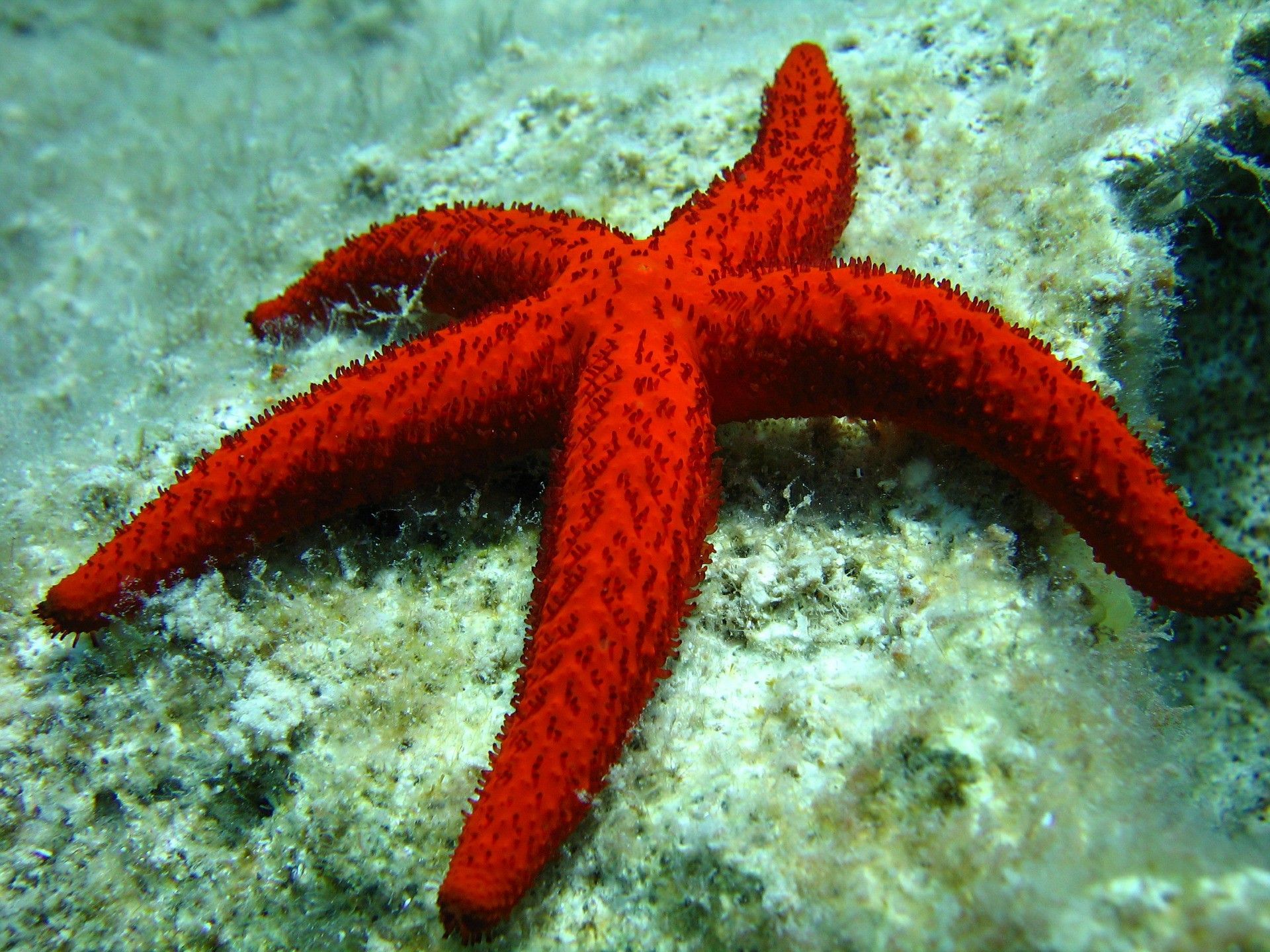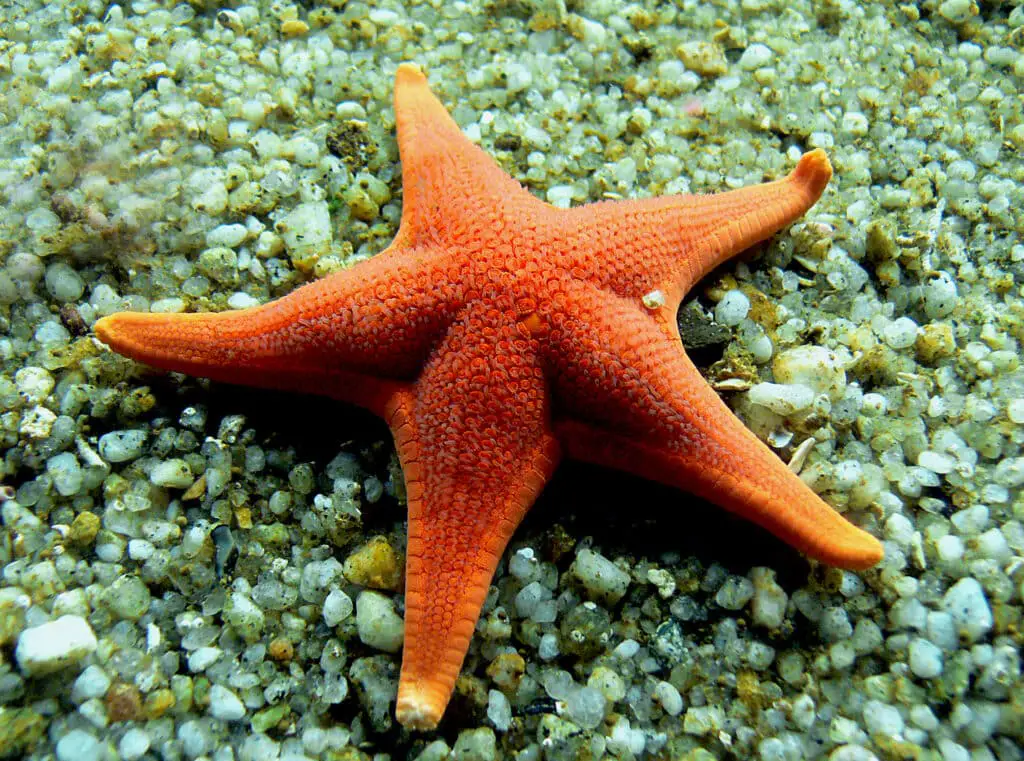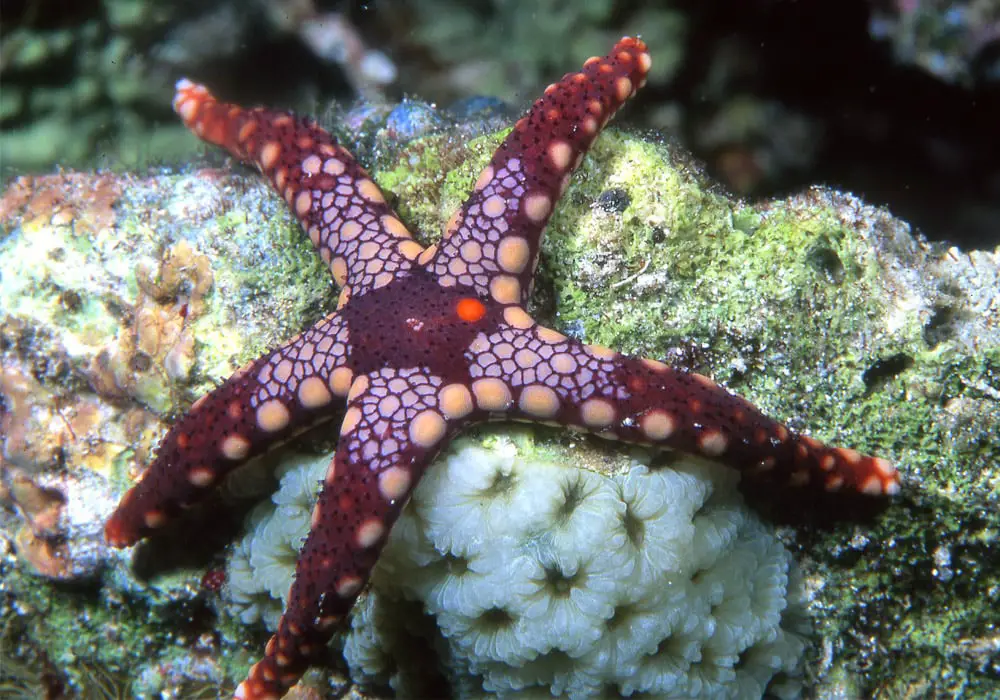How Do Starfish Eat

Introduction
How Do Starfish Eat: Beneath the shimmering surface of the world’s oceans lies a realm teeming with life, where an astonishing array of creatures has evolved unique and often enigmatic ways of surviving and thriving. Among these captivating marine inhabitants are starfish, or sea stars, with their mesmerizing radial symmetry and intriguing feeding habits. In our quest to understand these remarkable marine organisms, we embark on a journey into the depths to unravel the captivating question: “How Do Starfish Eat?”
Starfish, often celebrated for their striking appearance, are more than just marine adornments; they are voracious predators and scavengers with a feeding strategy that challenges conventional expectations. Their feeding behaviors are not only captivating but also fundamental to the delicate balance of marine ecosystems.
As we delve into the world of starfish feeding, we uncover the intricate mechanisms and adaptations that enable them to capture and consume their prey, which can range from mollusks to crustaceans and even other starfish. Their feeding process, while seemingly alien, is a testament to nature’s diversity and ingenuity.
Our journey takes us through the specialized structures and behaviors starfish reproduce employ, including their tube feet, tube-like structures, and the unique process of stomach eversion. We also explore the role of chemical cues in guiding their hunting endeavors and the fascinating phenomenon of regeneration that enables them to recover from injuries incurred during meals.
Join us as we unravel the mysteries of starfish feeding, a compelling saga of predation, adaptation, and survival in the ever-changing world beneath the waves. Through the lens of starfish feeding, we gain a deeper appreciation for the intricate web of life in the ocean and the vital role these captivating creatures play in shaping marine ecosystems.

How do starfish eat their food?
The starfish forces open the shell with suction disks on the underside of its body, and then inserts its stomach membranes through its mouth into the opening of the shell. Digestive juices break down the shellfish’s body, which is then absorbed into the starfish’s stomach.
Starfish have a unique feeding mechanism. They capture and consume their prey using a combination of specialized structures and behaviors. Their primary feeding process involves the following steps:
Locating Prey: Starfish have a keen sense of smell and can detect chemical cues released by potential prey, such as mollusks, crustaceans, and other small marine organisms.
Capturing Prey: When they encounter prey, starfish extend their tube feet to wrap around the prey item, immobilizing it.
Stomach Eversion: One of the most distinctive features of starfish feeding is their ability to evert (extend) their stomach out of their body. They push their stomach into the opening of the prey’s shell or body, allowing them to digest the prey externally.
Digestion: Once the stomach is inside the prey, it releases digestive enzymes that break down the prey’s tissues into a liquid form.
Absorption: The digested material, now in liquid form, is absorbed by the starfish’s stomach lining, providing essential nutrients.
Retraction: After digesting the prey’s soft tissues, the starfish retracts its stomach and consumes what remains of the prey’s hard parts, such as shells.
This unique feeding process allows starfish to feed on a variety of prey items, even those with protective shells. It also minimizes the risk of ingesting indigestible or harmful materials.
How do starfish eat and drink?
Starfish eat in a very unusual way. They use their feet, which have suction-cups on the bottom, to help them hold on to their prey. Once they have a good grip on dinner, they use their feet to open it up if it’s a clam or oyster.
Starfish obtain their nourishment primarily through their feeding process, as described above. They do not eat or drink in the same way humans or mammals do. Instead, they consume their prey and absorb the nutrients through their stomach lining.
Starfish are marine animals, and they are surrounded by seawater, which contains the essential elements and compounds they need for survival. They obtain oxygen and other necessary substances through diffusion across their thin skin and tube feet. They do not have specialized organs for drinking or filtering water, as their reliance on seawater fulfills their hydration and respiratory needs.
Do starfish have teeth?
ALTHOUGH SEA STARS ARE OFTEN REFERRED TO AS STARFISH, THEY’RE NOT RELATED TO FISH AT ALL! A sea star’s mouth, which is on the underside of its body, has no teeth. When feeding, sea stars wrap their arms around their prey and then push their stomachs out of their mouths to consume their food.
Starfish do not have teeth in the traditional sense, like mammals or some other animals. Their feeding mechanism relies on a combination of structures, including their tube feet, tube-like structures, and the ability to evert their stomach for digestion.
The absence of teeth does not limit starfish’s ability to feed on a variety of prey. Their feeding adaptations are well-suited to their ecological niche in the marine environment, allowing them to capture, immobilize, and digest their prey effectively.
How do starfish eat Class 7?
A starfish feeds on animals covered by hard shells of calcium carbonate. After opening the shell, the starfish pops out its stomach through its mouth to eat the soft animal inside the shell. Various digestive enzymes aid the breakdown of this food.
The question “How do starfish eat Class 7?” appears to reference a specific topic or curriculum related to science education for seventh-grade students. In a classroom context, students in the seventh grade may learn about the biology and feeding mechanisms of starfish as part of their science curriculum. The information provided in the previous answers can serve as a simplified explanation of starfish feeding for students in this grade level. Teachers and educational materials may provide additional details and hands-on activities to help students better understand the topic.
Do starfish eat their own kind?
Because female sea stars of this species produce up to 10 million eggs per year, that is a lot of potential competition for a juvenile sea star. Thus, eating their siblings not only helps them grow, but also removes future competitors from their surroundings.
Yes, starfish, also known as sea stars, can occasionally eat their own kind. While it’s not their preferred or typical behavior, certain circumstances may lead to cannibalism among starfish. Cannibalism is more likely to occur in situations where food is scarce, competition for resources is intense, or when starfish encounter weakened or injured individuals of the same species.
Starfish are opportunistic feeders, and they have a diverse diet that includes various marine organisms such as mollusks, crustaceans, and other small animals. They are primarily scavengers or predators of slow-moving or sessile (non-moving) creatures. However, when faced with limited food options or when they encounter other starfish that are vulnerable, they may resort to cannibalistic behavior.
It’s essential to note that cannibalism among starfish is not a common or everyday occurrence. They typically feed on other marine organisms rather than their own kind, and their cannibalistic behavior is often a response to specific environmental conditions.
How do starfish eat for kids?
They prey on snails, oysters, and other slow-moving sea animals. A starfish pulls the shell of its victim apart with its arms. It then pushes its stomach out onto its prey, produces chemicals that start to digest the prey’s body, and finally sucks up the juices.
Explaining how starfish eat to kids can be a fun and educational experience. Here’s a simplified explanation suitable for children:
Starfish are amazing creatures that live in the ocean. They eat different kinds of sea animals like clams, mussels, and small crabs. But how do they eat? Well, starfish have special tube feet that they use to catch their food. Imagine these tube feet like tiny arms or fingers.
When a starfish finds something yummy to eat, it uses its tube feet to wrap around the food, almost like giving it a big hug! Then, something really cool happens. Starfish can push their stomach out of their mouth and into the food they’ve caught. It’s like they’re saying, “I’m going to eat you from the outside!”
Their stomach releases special juices that turn the food into mush, kind of like how our stomach helps digest our food inside our bodies. The mushy food is then absorbed into the starfish’s stomach lining, and that’s how they get their meal.
After they finish eating, they pull their stomach back inside their body, and they’re ready for their next adventure in the ocean!
So, starfish have a unique way of eating, using their tube feet and their special stomach-extending trick to enjoy their underwater meals.
How do starfish bite?
Do starfish bite? No, starfish don’t bite. They have no teeth and are not dangerous to humans. These small sea creatures are not exactly known for their voracious appetite and won’t harm you.
Starfish don’t bite in the same way animals with teeth do because they don’t have teeth or jaws. Instead, they have a very different way of capturing and eating their food.
Starfish have tube feet, which are like tiny, flexible arms on the underside of their bodies. These tube feet are quite strong and are used to grab onto their prey. When a starfish finds something it wants to eat, it extends its tube feet and wraps them around the food.
To “bite” or capture their prey, starfish use their tube feet to create a tight grip, immobilizing the animal they’re trying to eat. Once they have a firm hold, starfish can then start their feeding process.
The most fascinating part of starfish feeding is that they can extend their stomach out of their mouth and into their prey. This allows them to digest their food outside of their bodies. The stomach releases special digestive juices that turn the prey’s tissues into a liquid, making it easier for the starfish to absorb the nutrients.
So, starfish don’t have teeth or jaws to bite with; instead, they use their tube feet and their unique stomach-extending technique to capture and eat their food.
Can starfish survive in water?
Everyone needs to understand the importance of not touching and not removing starfish from the sea. The answer is simple: starfish die when they are taken out of the water. Since starfish cannot stay in the water and breathe, they suffer from carbon monoxide poisoning, which causes them to die from asphyxiation.
Yes, starfish, or sea stars, are well adapted to live in water, and they are exclusively marine creatures. They are specially designed for life in the ocean and rely on seawater to support their bodily functions.
Here’s how starfish are adapted to survive in water:
Water Vascular System: Starfish have a unique water vascular system, which is a network of fluid-filled canals that helps them control their tube feet for movement and feeding. This system is essential for their underwater lifestyle.
Tube Feet: Starfish possess tube feet, which are small, flexible appendages equipped with tiny suction cups. These tube feet allow them to move, capture prey, and sense their environment in the water.
Gills: To obtain oxygen from the water, starfish have tiny gills on their undersides that facilitate gas exchange, allowing them to breathe underwater.
Saltwater Adaptations: Starfish are osmoconformers, meaning their internal salt concentrations match the surrounding seawater. This adaptation helps them maintain proper osmotic balance.
Behavioral Adaptations: Starfish have evolved behaviors like their feeding mechanisms and responses to environmental cues that are specifically suited to their life in the ocean.
In summary, starfish are highly adapted to their underwater habitat and rely on seawater for their survival. They cannot survive outside of water for extended periods because their physiology and behavior are intricately tied to marine conditions.

Conclusion
Our journey into the intriguing world of starfish feeding has revealed a story of remarkable adaptations, resourcefulness, and the unique mechanisms that underpin their survival beneath the ocean’s surface. As we conclude our exploration of the question, “How Do Starfish Eat?” we find ourselves marveling at the intricate tapestry of life in marine ecosystems and the vital role starfish play within it.
Starfish, with their iconic radial symmetry and tube feet, have demonstrated a feeding strategy that defies convention. Their seemingly alien process of consuming prey is both efficient and effective, allowing them to capture and devour a variety of marine organisms, from mollusks to crustaceans and even other starfish. Their tube feet play a pivotal role in grasping and immobilizing prey, showcasing the incredible adaptability of these marine invertebrates.
One of the most extraordinary aspects of starfish feeding is the process of stomach eversion, where they extend their stomach out of their body to digest their prey externally. This unique strategy minimizes the risks of ingesting indigestible or harmful materials, demonstrating the subtle intricacies of their ecological niche.
We have also explored the role of chemical cues in guiding starfish hunting endeavors, revealing the importance of chemical communication in their pursuit of sustenance. Additionally, their regenerative abilities, allowing them to regrow lost arms or repair injuries, underscore the resilience of these captivating creatures.
In the grand tapestry of ocean life, starfish are integral players, contributing to the delicate balance of marine ecosystems. Their feeding behaviors, though seemingly alien, reflect the diversity and ingenuity of nature’s solutions to the challenges of survival in the watery depths.
As we bid farewell to our exploration of starfish eat, we are reminded of the ceaseless wonders of the ocean’s depths and the countless mysteries that continue to inspire and captivate our imaginations. The story of starfish eating is a testament to the ongoing saga of life beneath the waves, where each creature, no matter how seemingly unusual, plays a vital role in the intricate dance of marine life.



